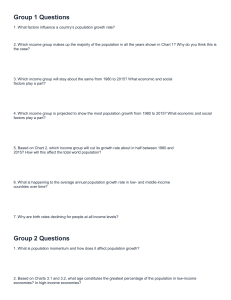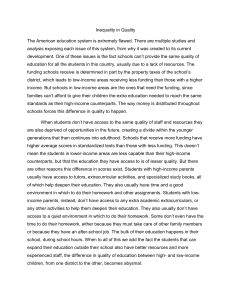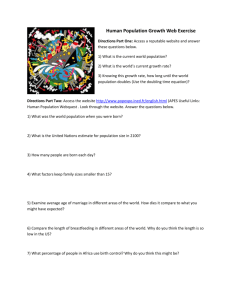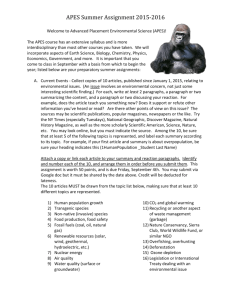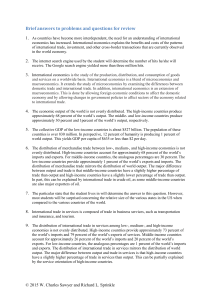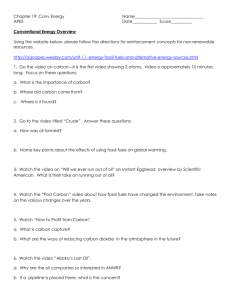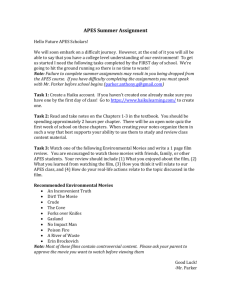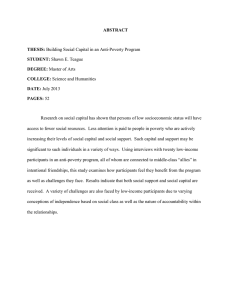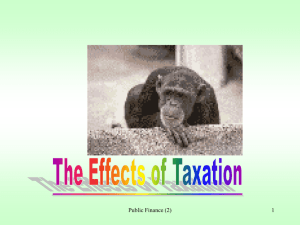Human Population Dynamics Webquest
advertisement
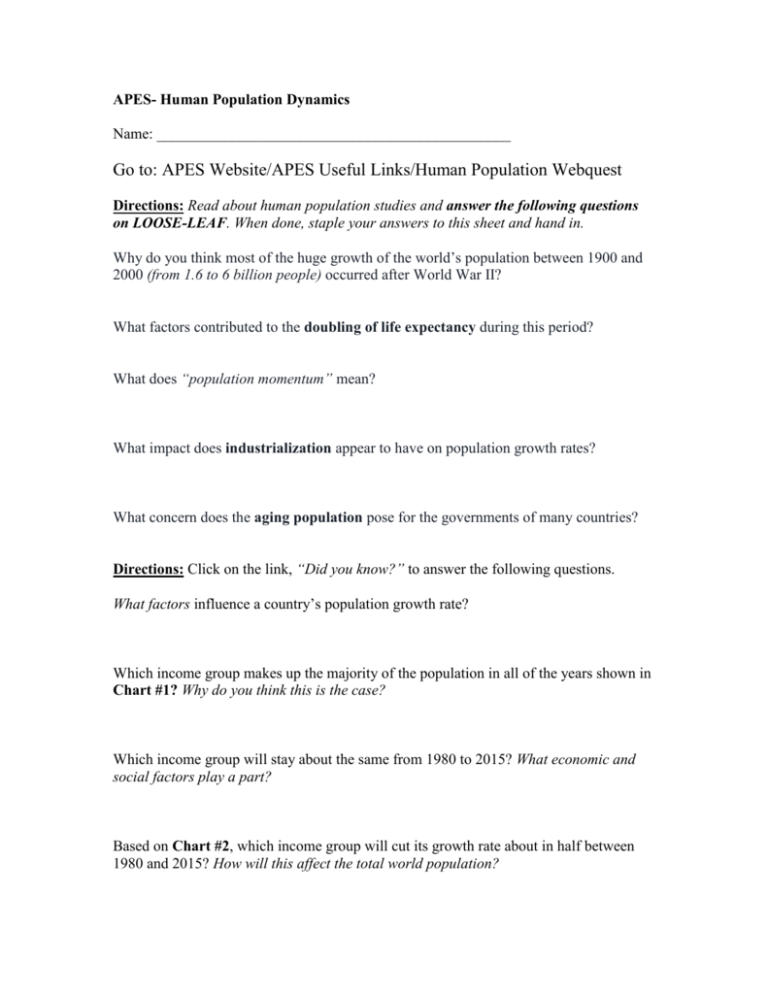
APES- Human Population Dynamics Name: _______________________________________________ Go to: APES Website/APES Useful Links/Human Population Webquest Directions: Read about human population studies and answer the following questions on LOOSE-LEAF. When done, staple your answers to this sheet and hand in. Why do you think most of the huge growth of the world’s population between 1900 and 2000 (from 1.6 to 6 billion people) occurred after World War II? What factors contributed to the doubling of life expectancy during this period? What does “population momentum” mean? What impact does industrialization appear to have on population growth rates? What concern does the aging population pose for the governments of many countries? Directions: Click on the link, “Did you know?” to answer the following questions. What factors influence a country’s population growth rate? Which income group makes up the majority of the population in all of the years shown in Chart #1? Why do you think this is the case? Which income group will stay about the same from 1980 to 2015? What economic and social factors play a part? Based on Chart #2, which income group will cut its growth rate about in half between 1980 and 2015? How will this affect the total world population? What is happening to the average annual population growth rate in low-and middle income countries over time? Why are birth rates declining for people at all income levels? Group #2 Questions What is population momentum and how does it affect population growth? Based on Charts 3.1 and 3.2, what age constitutes the greatest percentage of the population in low-income economies? In high-income economics? At what age does the gender balance of populations change? What is the effect of income at that age? Compare and contrast the age composition between low-income and high-income economies in 2000 and 2030. What are the differences between the two? Are there any similarities? How does having a mostly young population affect a country? Having a mostly elderly population? What are the effects of migration and urbanization on a country? Group #3 Questions What affect does increasing population have on the GNP per capita? How might a growing population limit access to safe water? What connection might there be between population growth and deforestation? What other harmful effect might increasing population have on the environment? What social strategies might help countries limit population growth? Conclusion: Write a letter to your local congressperson (Susan Davis) or local newspaper summarizing the problem of population growth and highlighting a specific, realistic action the government or individual citizens can take to help keep Earth and its people in balance. You could use graphs or other available data in describing both the problem and its proposed solution. Must be in business letter format and at least 1 page long with at least 3 different points of evidence included.
